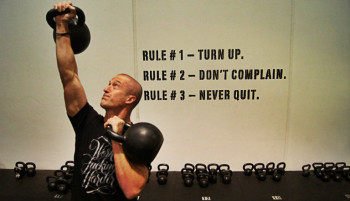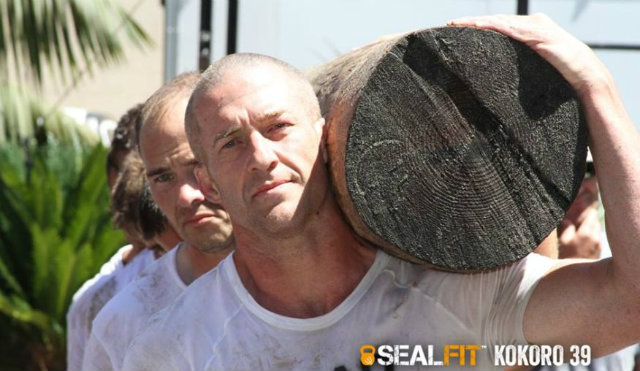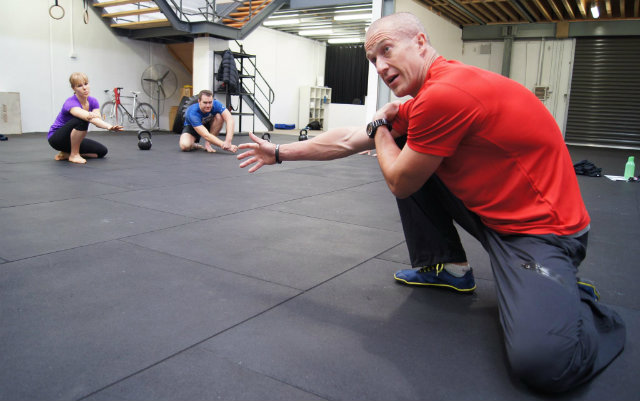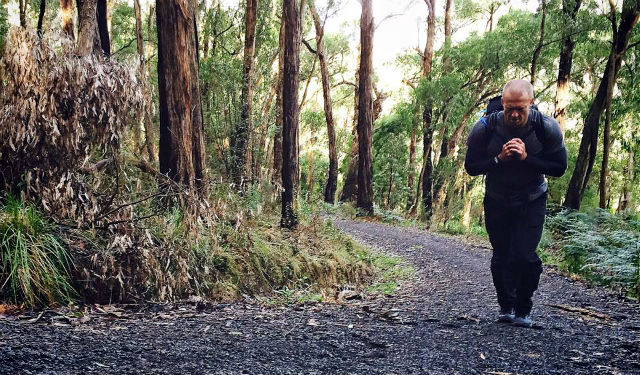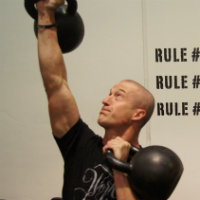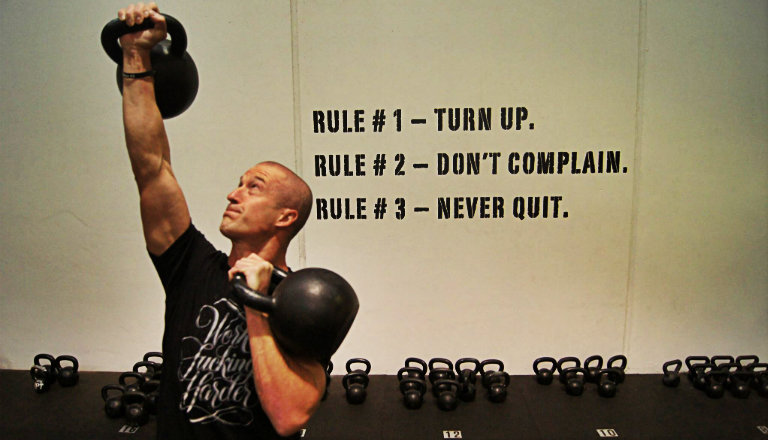 Reading Time: 6 minutes
Reading Time: 6 minutesI am inundated with health and fitness advice daily. I’m sure you are, too, and just like you, I need to apply a careful filter to what I pay attention to and what I ignore.
One of the things I am less and less inclined to pay attention to is the advice of someone much younger than me. The reason is quite simple — a thirty-year-old just doesn’t know what it’s like to try to stay active in their forties. They may think they do, but the reality is they have no idea.
The training advice I see offered from these youngsters boils down to this, “Raaaaarrrgh. Lift more. You don’t need to stretch. You’re only as young as you believe you are. Raaaarrrgh.” Sure, when I was thirty I thought you could still go hard all the time at forty-plus, too. I also thought cardio was overrated and stretching was largely unnecessary. Because who needs full range of movement or a healthy heart, right?
Being in my mid-forties, I am stuck in no-man’s land a bit — too old to train like a thirty-year-old yet too young to fully understand what the fifty- and sixty-year-olds are going through. But I offer these bits of advice to anyone who wants to stay active at my age or beyond. Given that I’ve used these principles to complete in Ironman races and keep up with Navy SEALs (while in my forties), I believe they work pretty well.
1. Stop Eating for Mass Gain
Every musclehead out there is screaming at me right now. But it’s true: beyond a certain age it’s going to get hard to take those extra calories and turn them into muscle. Mostly, your body will just turn them into fat. This problem is compounded for all those guys who think a certain number on the scale is where they need to be rather than paying attention to their actual bodyfat levels and how they look.
The added bonus to this is that a little less weight will be easier on your joints. Trust me when I say there are going to be days you’ll appreciate that, even if they haven’t come yet. An active lifestyle leads to some stiffness as you age, and this is multiplied if your choice of fun involves having to carry your own bodyweight for extended periods, like with running, hiking, or cycling.
Your diet should be simple. Focus on lean protein sources and get plenty of vegetables. I tell my clients to eat a salad daily. That fiber is important, too, you know.
2. Stretch Way More
When I comes to training, I have always been lucky. Very early on in my career, I met Ian King. Ian, for those who don’t know, is one of the all-time smartest guys in the exercise world. He told me you should stretch as often as you train. He said that for every hour of hard work you do, you need an hour of recovery work. That was twenty years ago and we’re just now starting to understand fully the importance of recovery.
At my facility, Read Performance Training, roughly half of every training session is spent addressing range-of-motion concerns, because most people simply lack even normal values. By the way, if you can’t touch your toes, you lack normal range.
The point of stretching is twofold:
- It helps teach the body what is safe range of motion. If you have a maximum of ninety degrees of movement, you will likely only control about two-thirds of that. As you move less and less, you’ll end up with even less range. Next thing you know, there will be activities and exercises you won’t be able to do because your body wants to stay safe and simply won’t allow you to.
- Perhaps most importantly, passive stretching helps to reset the nervous system. The modern world is filled with stress and we do little to offset it. Passive stretching detunes you from fight-or-flight mode and allows you to actually train harder.
3. Do Some Cardio
After age 44, whether you’re male or female, the number one risk factor for death is cardiovascular disease. If you’ve been disavowing my first recommendation your whole life — i.e. you’ve been stuffing yourself like an offseason bodybuilder in bulking mode — then heavy strength training may predispose you to more cardiovascular problems, not fewer.
All that breath holding you do to brace while lifting heavy raises blood pressure. If your heart and cardiovascular network isn’t suited to deal with that, then you might find yourself in the back of an ambulance pretty soon.
The other benefit of regular bouts of aerobic exercise is that moderate amounts detune the nervous system, just like passive stretching. This again helps to offset some of the stresses of modern life as well as workout stress.
4. Avoid Compressive Lifts
It’s a sad reality, but old spines don’t like heavy loads on them very often. In the case of deadlifts, most of the guys I train who are in their fourth decade or more hit this lift only once every two weeks. They still train a hinge pattern in the other week but a lighter version such as kettlebell swings.
The same goes for squats. Squatting is good and an excellent barometer for how your body is moving. But the day after a heavy squat session more than your quads will be sore. It’s quite likely your knees and back will have copped a beating, too. Unlike muscles, however, joints don’t really heal from damage. Once they’ve been abused and damaged, they pretty much stay that way for good.
Give yourself permission to take it easy some days. If you’ve spent a lifetime going hard, as I have, it can be difficult to accept that sometimes you just can’t anymore. I still have a great work ethic and love to train hard, but as I’ve gotten to know my body better, I have learned to listen when it tells me to take an easy day.
It’s not weak or lazy to take it easy today so you can train again tomorrow. My view is that I am happy to give up a workout today to save me from an injury tomorrow that may necessitate a year or more off training due to surgery. That one easy day will be nothing in comparison to all the time off that an injury might cause.
Giving yourself permission to train appropriately for you, in whatever physical state you are in right now, can be very hard. Luckily, you’ve got another forty years to work on it.
The Focus of Exercise After 40
If all the above sounds like I advocate health first, then you’re right. At forty-plus the focus shouldn’t be on performance but on health.
My goal is to arrive at fifty in the same shape I am in now, and at sixty in the same shape I was at fifty. That means I take a moderate, long-term view of what I should be doing on daily basis. Eating more vegetables, stretching more, keeping my heart healthy, and keeping my joints pain free will go a long way toward that.
